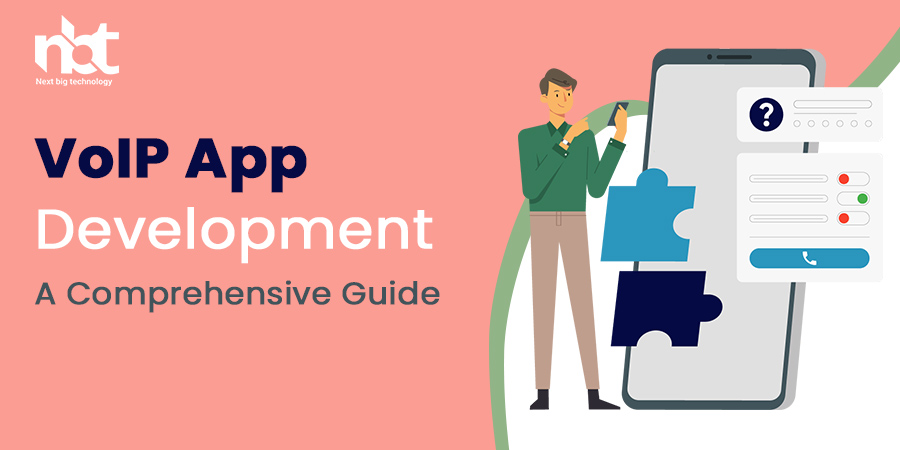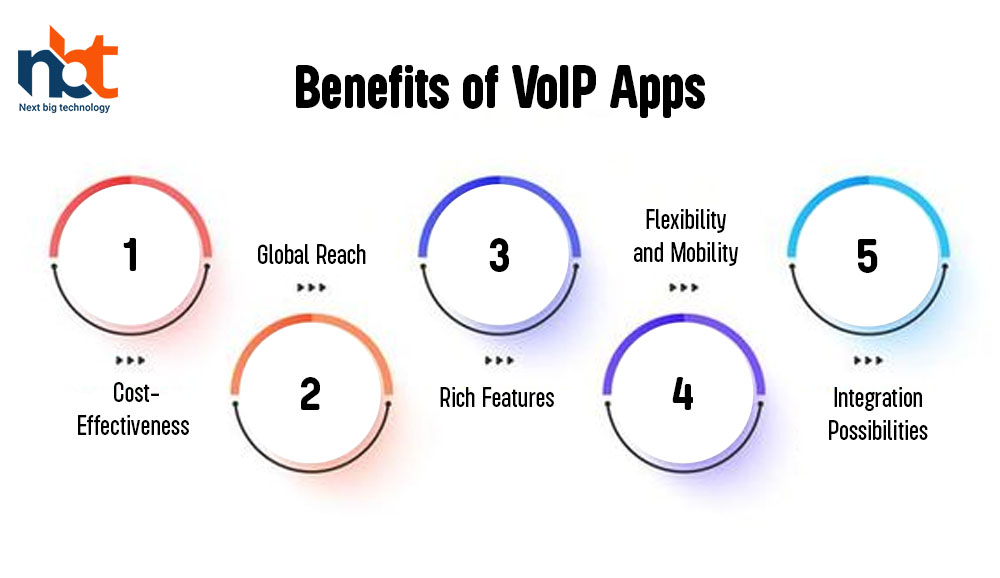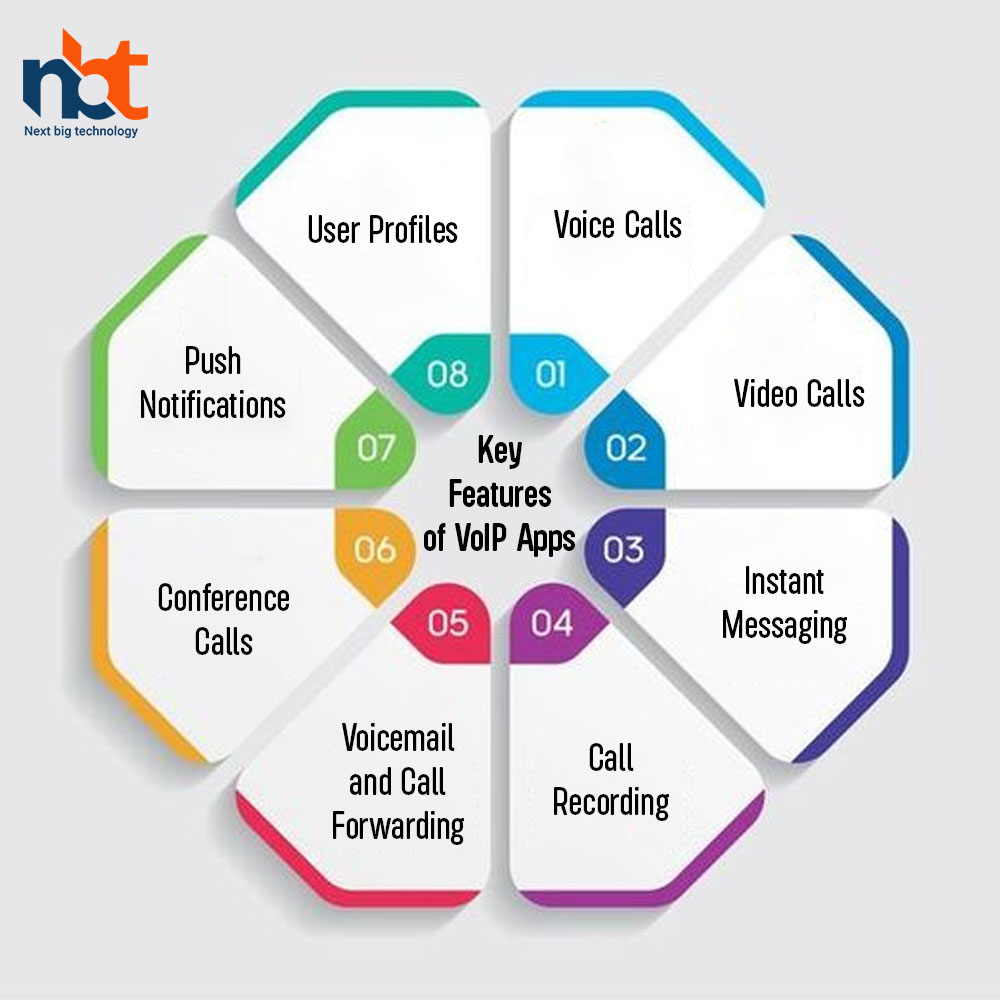Voice over Internet Protocol (VoIP) technology has revolutionized communication by enabling voice and multimedia transmissions over the internet. VoIP apps have gained immense popularity due to their cost-effectiveness and global reach. In this comprehensive guide, we will delve into the world of VoIP app development, exploring its benefits, features, development process, and more.
Table of Contents
Introduction to VoIP App Development
- Understanding VoIP Technology and Its Significance
- Exploring the Growing Demand for VoIP Apps
Benefits of VoIP Apps
Cost-Effectiveness
- Reducing Communication Costs for Long-Distance Calls
- Eliminating the Need for Traditional Phone Lines
Global Reach
- Enabling International Calls at Lower Rates
- Connecting Users Across Borders Seamlessly
Rich Features
- Offering Multimedia Communication (Voice, Video, Text)
- Integrating Features like Call Recording, Conferencing, and Messaging
Flexibility and Mobility
- Facilitating Communication Anywhere with an Internet Connection
- Supporting Remote Work and Business Communication
Integration Possibilities
- Integration with CRM Systems, Customer Support, and Business Tools
- Enhancing Productivity and Workflow Efficiency
Key Features of VoIP Apps
Voice Calls
- Enabling High-Quality Voice Calls Over the Internet
- Implementing Noise Cancellation and Echo Reduction
Video Calls
- Offering Video Conferencing and Real-Time Visual Communication
- Supporting Group Video Calls for Collaboration
Instant Messaging
- Integrating Text Chat for Real-Time Communication
- Supporting File Sharing and Multimedia Messages
Call Recording
- Allowing Users to Record Important Conversations
- Storing and Accessing Recorded Calls for Future Reference
Voicemail and Call Forwarding
- Providing Voicemail Services for Missed Calls
- Enabling Call Forwarding to Different Numbers
Conference Calls
- Facilitating Multi-Participant Conference Calls
- Enhancing Team Collaboration and Virtual Meetings
Push Notifications
- Sending Real-Time Notifications for Incoming Calls and Messages
- Keeping Users Connected and Informed
User Profiles
- Creating User Profiles with Contact Information and Status
- Enabling Users to Set Availability and Status Updates
VoIP App Development Process
Idea and Conceptualization
- Defining the Purpose and Scope of Your VoIP App
- Identifying Target Audience and Unique Selling Points
Market Research and Analysis
- Studying Competitors and Existing VoIP Apps
- Identifying Gaps and Opportunities in the Market
Technology Stack Selection
- Choosing the Right Technologies for VoIP Implementation
- Selecting Backend Frameworks, APIs, and Libraries
UI/UX Design
- Creating User-Centric Design for Intuitive Navigation
- Designing Interfaces for Calls, Messaging, and Contacts
Development
- Implementing VoIP Protocols for Audio and Video Transmission
- Integrating Call Management, Messaging, and Multimedia Features
Testing and Quality Assurance
- Conducting Rigorous Testing of Audio and Video Quality
- Ensuring Compatibility on Different Devices and Networks
Security and Privacy Measures
- Implementing Encryption for Secure Voice and Data Transmission
- Safeguarding User Data and Call Records
Beta Testing
- Launching a Beta Version to Gather User Feedback
- Refining Features and Addressing Bugs
Choosing a Development Approach
Native App Development
- Building Separate Apps for Android and iOS Platforms
- Leveraging Platform-Specific Features and Performance
Cross-Platform Development
- Developing a Single Codebase for Multiple Platforms
- Using Frameworks like React Native, Flutter, Xamarin
Web-Based VoIP
- Creating Web Applications for VoIP Communication
- Allowing Users to Make Calls from Browser
Integration with Backend Services
Server Infrastructure
- Setting Up Servers for Call Routing and Signaling
- Managing User Authentication and Data Storage
Real-Time Communication Protocols
- Integrating SIP (Session Initiation Protocol) for Call Establishment
- Using WebRTC (Web Real-Time Communication) for Browser-Based Calls
User Authentication and Security
- Implementing Secure User Authentication Mechanisms
- Integrating OAuth, JWT, or Two-Factor Authentication
User Experience and Interface Design
Intuitive User Interface (UI)
- Designing User-Friendly Interfaces for Calls and Messages
- Implementing Clear Icons and Navigation Elements
Contact Management
- Creating an Address Book for Storing Contacts
- Enabling Search and Quick Access to Contacts
In-App Calling and Messaging
- Implementing One-Tap Calling and Messaging
- Providing Options for Group Calls and Messages
Push Notifications
- Integrating Push Notifications for Incoming Calls and Messages
- Notifying Users Even When the App Is in the Background
Call History and Logs
- Displaying Call History and Call Records
- Allowing Users to View, Delete, and Call Back
Testing and Quality Assurance
Audio and Video Quality Testing
- Conducting Rigorous Testing of Audio and Video Quality
- Ensuring Clear Communication and Minimal Latency
Network Compatibility Testing
- Testing the App on Different Network Conditions (3G, 4G, Wi-Fi)
- Ensuring Consistent Performance in Varying Network Environments
Bug Testing and Debugging
- Identifying and Fixing Any Glitches, Crashes, or Errors
- Ensuring Stable and Reliable App Performance
Launch and Deployment
App Store Submission
- Preparing App Store Listings and Descriptions
- Ensuring Compliance with App Store Guidelines
Promotion and Marketing
- Creating a Marketing Strategy to Promote Your VoIP App
- Utilizing Social Media, Influencers, and Online Ads
Monitoring and Analytics
- Implementing Analytics Tools to Monitor User Engagement
- Gathering Insights for Continuous Improvement
Post-Launch Support and Maintenance
Regular Updates
- Releasing Updates for Bug Fixes and Feature Enhancements
- Responding to User Feedback and Requests
Customer Support
- Providing Efficient Customer Support Channels
- Addressing User Queries and Technical Issues
Monetization Strategies
Freemium Model
- Offering Basic Features for Free and Premium Features for Payment
- Allowing Users to Upgrade for Advanced Functionality
In-App Purchases
- Selling Virtual Goods, Credits, or Additional Features
- Offering Customization Options or Premium Stickers
Subscription Model
- Providing Subscription Plans for Continuous Access
- Offering Monthly, Annual, or Tiered Subscription Plans
Security and Privacy Concerns
Data Encryption
- Implementing End-to-End Encryption for Calls and Messages
- Ensuring User Data Remains Secure and Private
GDPR Compliance
- Adhering to Data Protection Regulations and User Consent
- Providing Opt-Out Options for Data Collection
Conclusion
VoIP app development offers an opportunity to create innovative communication solutions that connect people globally. By following this comprehensive guide, you can navigate the intricacies of VoIP technology, from ideation and design to development and deployment, and create an app that transforms the way people communicate over the internet.














